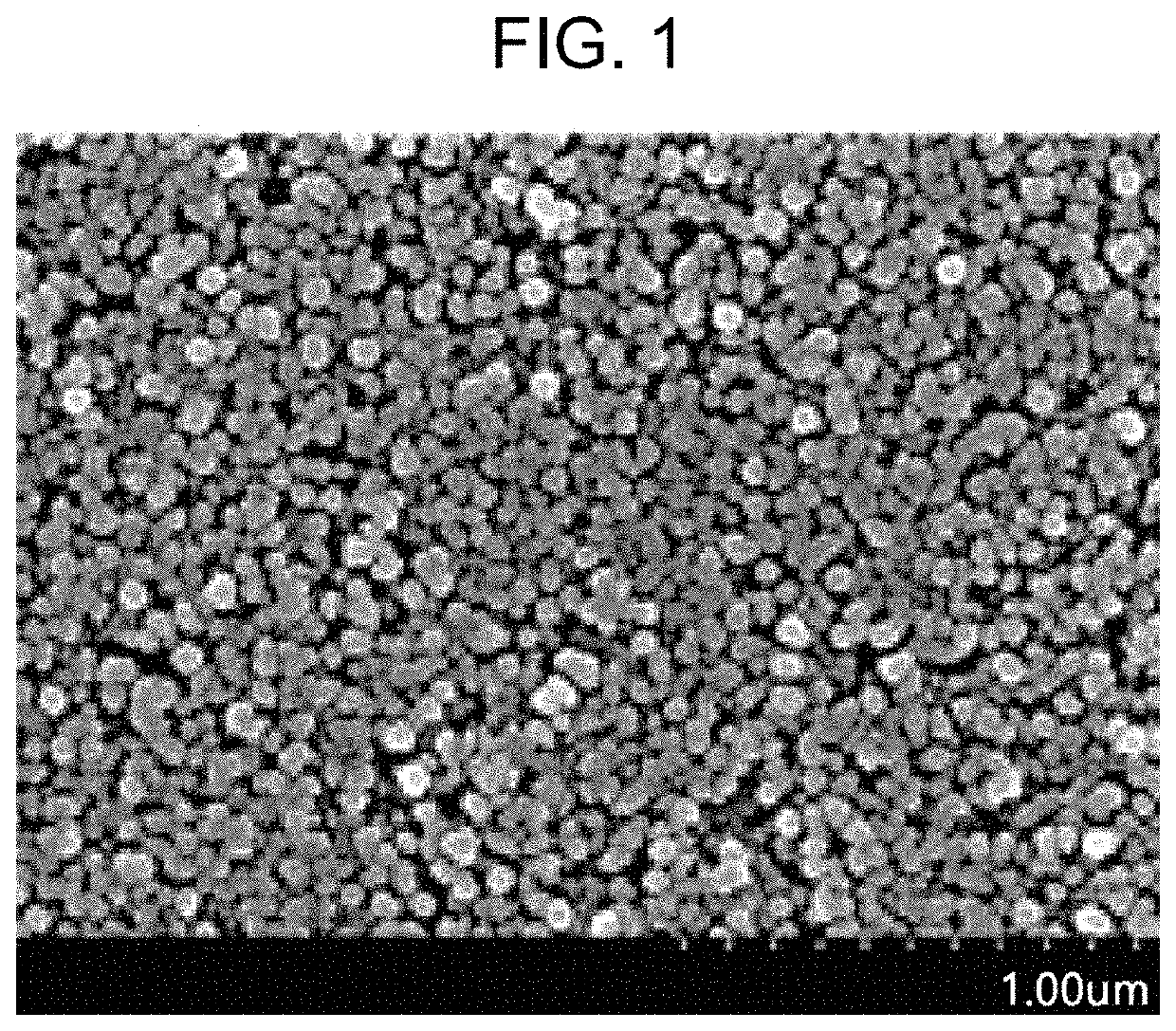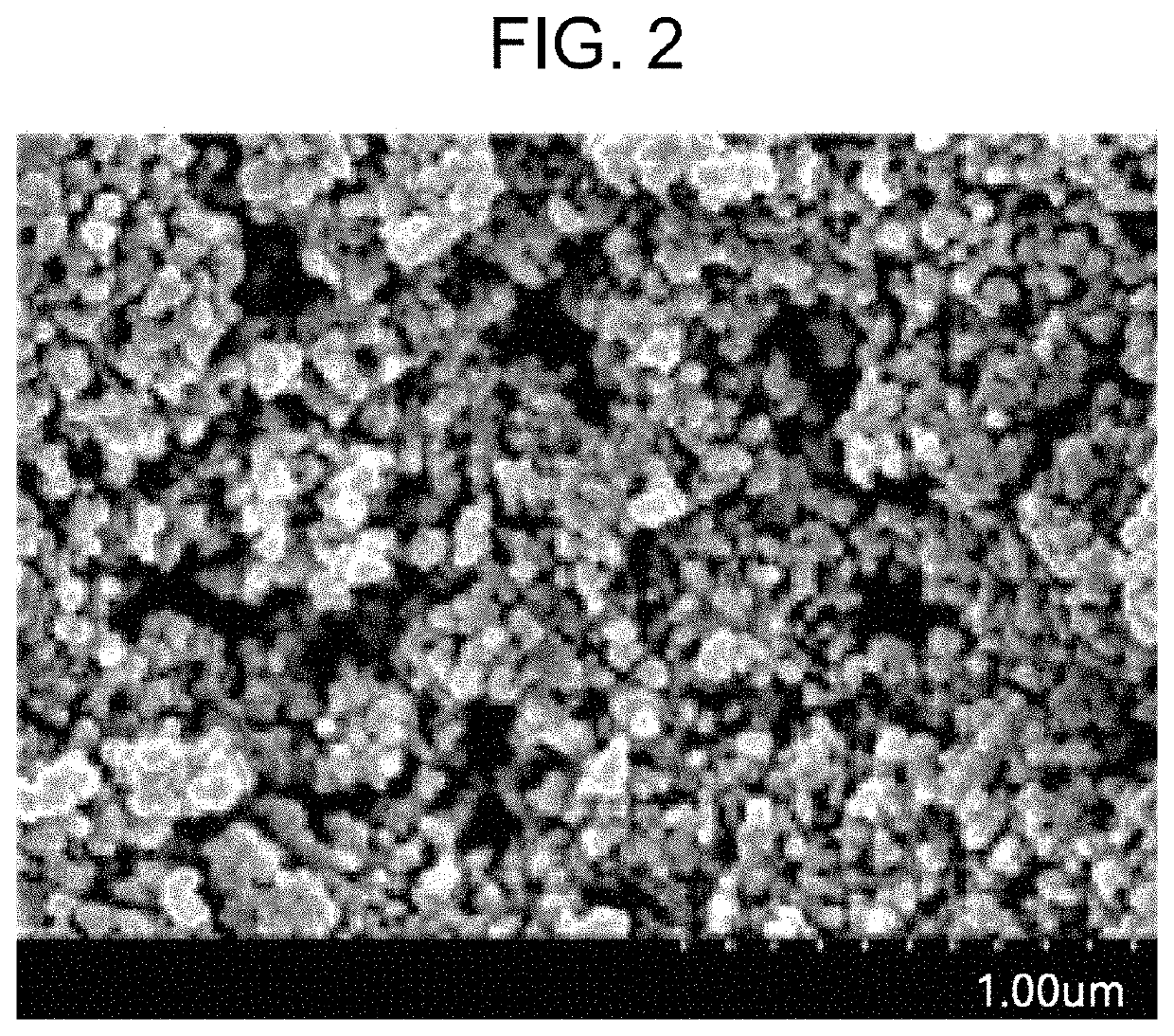Method for preparing photoresponsive self-powered electrochromic precursor, method for fabricating photoresponsive self-powered electrochromic device and photoresponsive self-powered electrochromic device fabricated by the fabrication method
a self-powered electrochromic and precursor technology, which is applied in the field of preparing a self-powered electrochromic precursor, a method for fabricating a self-powered electrochromic device by the fabrication method, can solve the problems of high fabrication cost, short circuit of solar cells, and difficulty in fabricating solar cells, and achieves remarkably rapid bleaching, simple structure, and easy handling and storage
- Summary
- Abstract
- Description
- Claims
- Application Information
AI Technical Summary
Benefits of technology
Problems solved by technology
Method used
Image
Examples
example 1
[0101]The mixture prepared in Preparative Example 1 was screen printed to a thickness of 5 μm on a first glass substrate and heat treated at 550° C. to form a film. Next, the film was immersed in a solution of 5-methylsalicylic acid as a ligand material for 2 h to adsorb the ligand thereto. Then, the ligand-adsorbed film was covered with a second glass substrate having an injection inlet such that the two glass substrates interposed the ligand-adsorbed film therebetween. Thereafter, the ligand-adsorbed film was sealed by stacking Surlyn® along the edge of the first glass substrate. An electrolyte (0.3 M LiI in methoxypropionitrile) was injected through the inlet, and the inlet was then closed to fabricate a photoresponsive self-powered electrochromic device.
example 2
[0102]The mixture prepared in Preparative Example 2 was spin coated at 2000 rpm on a polycarbonate substrate, heat treated at 120° C., and pressurized at 400 kg / cm2 to form a film. 0.1 g of nanosilica was mixed with 1 g of a 0.3 M solution of LiI in methoxypropionitrile to prepare a nanogel-type electrolyte. The nanogel-type electrolyte was printed on the film. The electrolyte-printed film was sealed with a polymer encapsulant at reduced pressure to fabricate a photoresponsive self-powered electrochromic device.
example 3
[0103]The mixture prepared in Preparative Example 3 was screen printed on a first glass substrate and heat treated at 550° C. to form a 1 μm thick film. Next, the film was immersed in a solution of 5-methylsalicylic acid as a ligand material for 2 h to adsorb the ligand thereto. Then, the ligand-adsorbed film was covered with a second glass substrate having an injection inlet such that the two glass substrates interposed the ligand-adsorbed film therebetween. Thereafter, the ligand-adsorbed film was sealed by stacking Surlyn® along the edge of the first glass substrate. An electrolyte (0.3 M LiI in methoxypropionitrile) was injected through the inlet, and the inlet was then closed to fabricate a photoresponsive self-powered electrochromic device.
PUM
| Property | Measurement | Unit |
|---|---|---|
| operating voltage | aaaaa | aaaaa |
| thickness | aaaaa | aaaaa |
| wavelength | aaaaa | aaaaa |
Abstract
Description
Claims
Application Information
 Login to View More
Login to View More - R&D Engineer
- R&D Manager
- IP Professional
- Industry Leading Data Capabilities
- Powerful AI technology
- Patent DNA Extraction
Browse by: Latest US Patents, China's latest patents, Technical Efficacy Thesaurus, Application Domain, Technology Topic, Popular Technical Reports.
© 2024 PatSnap. All rights reserved.Legal|Privacy policy|Modern Slavery Act Transparency Statement|Sitemap|About US| Contact US: help@patsnap.com










